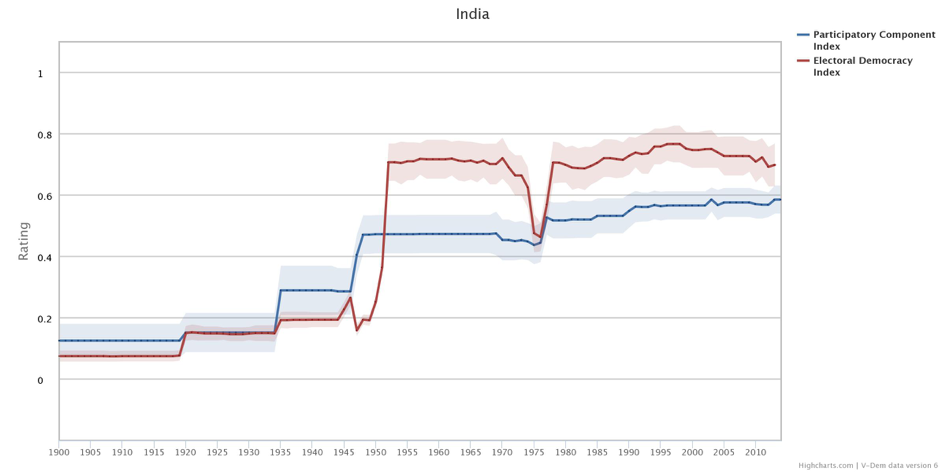Democracy in India
By: V-Dem Staff
Jan 27, 2017
Using V-Dem’s Country Graph Tool, we look at two of V-Dem’s Component Indices: the Electoral Democracy Index and the Participatory Component Index. The Electoral Democracy Index measures to what extent the ideal of electoral democracy is achieved. The Participatory Component Index is driven by uneasiness about the sole delegation of authority to representatives through elections. It thus takes engagement in civil society organizations, direct democracy, and subnational elected bodies into account.
Before India’s independence from Britain in 1947, the two indices followed a similar path, increasing steadily from low to mediumvalues. With the introduction of elections in the 1950 constitution, the Electoral Democracy Index rises sharply and has, since then, scored consistently higher than the Participatory Component Index. It has remained basically stable on a relatively high level with the exception of a dip during the state of emergency in the 1970s, when Prime Minister Indira Ghandi suspended civil liberties, postponed elections and outlawed any form of opposition protest. The Participatory component index by contrast, rose moderately around 1950, but has maintained approximately the same level since then.
To learn more about democracy in India or any other country, use the Online Analysis Tool at V-Dem.net.


